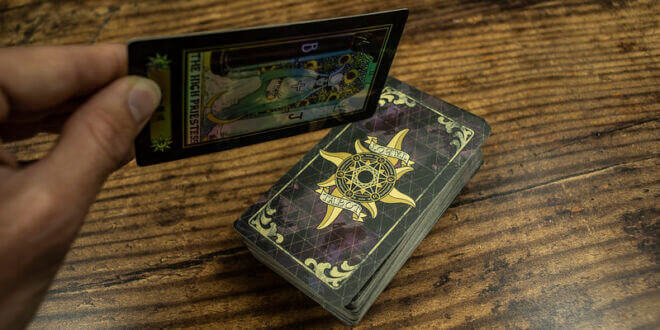Differences Between Physical And Digital Tarot
After the last post, an interesting subject arose that I felt deserved further exploration. In using a lot of what I would call the emergent metaphor of the times by tying the concepts of computing with the Tarot, the topic of digital Tarot readings & decks came to my attention. Hence, there is the question of discussing the differences between physical and Digital Tarot.
I’m not interested in disputing how effective digital readings are in inaccuracy. My interest is mostly identifying what I perceive to be some key subtle differences in the realm of the Human-Tarot relationship. What I am presenting here is my biased opinion.
Benefits of Digital Tarot
To start, there are some real benefits to digital Tarot decks/readings that I would be remiss to ignore. There is a level of convenience in that many of the programs & sites have card meanings and a reading component. The algorithms are well-written, and one can rely on the deck never being “ill-shuffled,” and the readings can be done speedily without people prying on the process. (“Is that a Tarot deck? Can I get a reading?”)
In a digital age where phones are also computers, the deck becomes one less thing to carry. It would seem that the digital alternative is great for people who prefer to have a very casual relationship with the Tarot. I feel that the readings are still effective and carry impact.
Advantages of a Physical Deck
However, these benefits seem to pale in comparison when weighed against the benefits of a physical deck. For starters, the digital component adds another degree of separation between the user and the experience. What makes a physical deck so engaging to me are the aesthetics that come with the experience. The simple requirement of care for a physical deck also builds a unique association to engaging the process.
The act of shuffling is an engaging and sensory experience (in a tactile and auditory sense). It simultaneously allows for some of the more unique experiences in working with the Tarot to occur. For example, it is agreed between many readers that cards that fall out during shuffling can be significant, and incredibly insightful readings can be carried out simply by allowing that process to occur.
Cards for Meditation and Concentration
Individual cards may be taken out of the deck for meditation and concentration and spreads and readings can be left out on a table or altar as a reflective reminder. A physical deck allows the practitioner to move cards around, create unique spreads, and generally spark some creative process.
Digital Tarot programs seem to only allow for some of the more conventional spreads. So, it can be said that digital Tarot is a little more of a “canned” experience.
The process of engaging physical cards inspires a more ceremonial feel that can encourage a slight alteration in consciousness. With digital readings, the ease of engaging the process by simply pushing a couple of buttons does not lend itself well to the meditative process that the Tarot encourages. Of course, the act of giving readings to others essentially requires the presence of a physical deck.
The potential of a physical deck
I have met a wide variety of people who have a very casual relationship with the Tarot, and the digital alternatives that exist seem to work well for them. Though for anyone who wishes to invite the Tarot to become more of an integrated component of their life, it would seem apparent that the digital alternatives cannot hold a candle to all of the potentials of a raw, physical deck.
In this day and age, I enjoy having a pocket computer and making abundant use of its functions. However I also very much enjoy having a physical art gallery in my pocket and all of its unique functions.
 Sun Signs Everything Under The Sun!
Sun Signs Everything Under The Sun!
